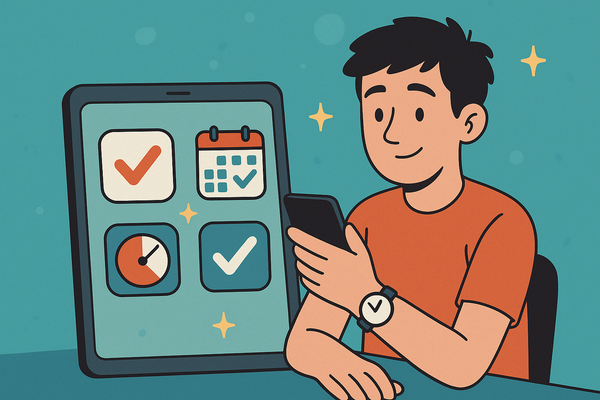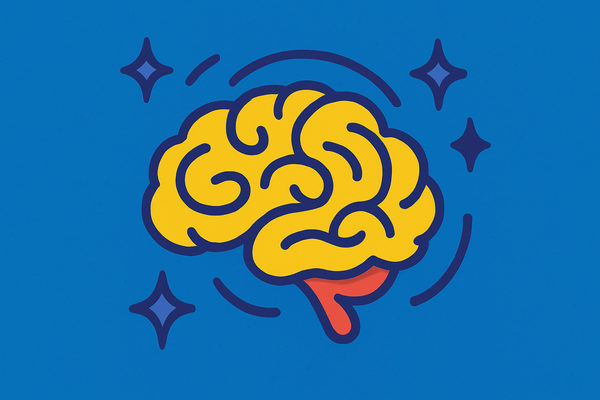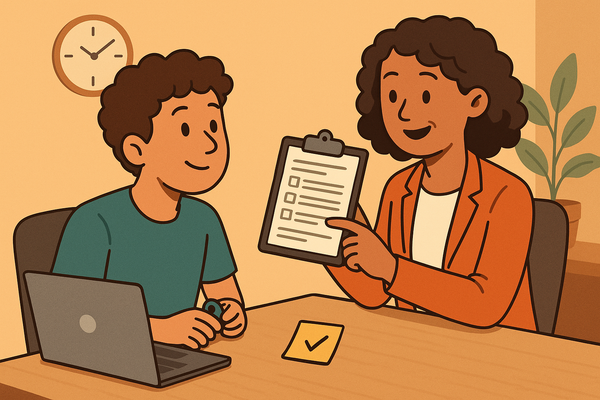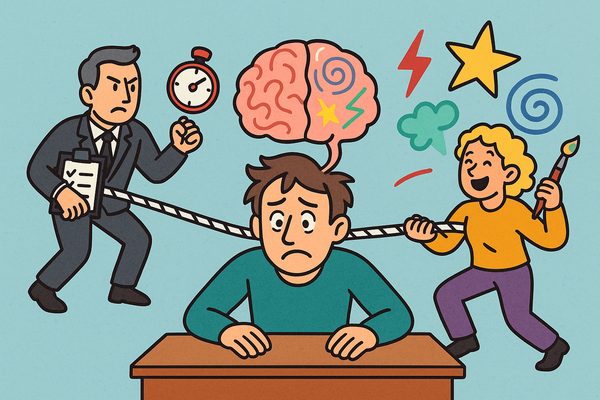The ADHD Professional's Guide to Saying No (Without Guilt)
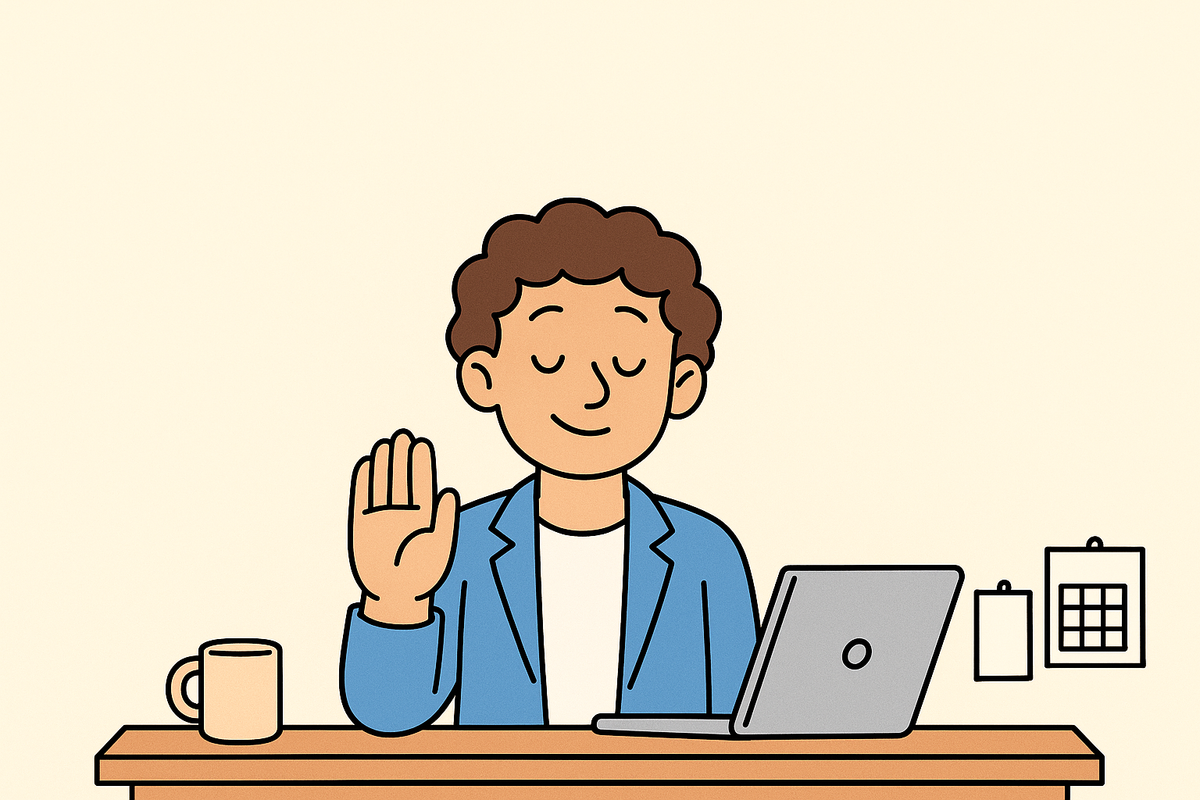
I used to say yes to everything. Meeting at 7 AM? Sure. Extra project on top of my already packed schedule? Of course. Can you cover my presentation tomorrow even though I haven't seen the materials? Absolutely.
I thought this made me a team player. What it actually made me was exhausted, overwhelmed, and resentful. I was drowning in commitments I'd agreed to in moments of people-pleasing panic, and my actual job performance was suffering because I couldn't focus on anything long enough to do it well.
Sound familiar? If you have ADHD, saying no probably feels impossible. We're wired to seek approval, avoid rejection, and our impulsive brains often agree to things before we've had time to think through the consequences. Add in rejection sensitive dysphoria, and the thought of potentially disappointing someone feels unbearable.
But here's what I learned the hard way: saying yes to everything means saying no to the things that actually matter. Including your own wellbeing, your core job responsibilities, and your ability to show up as your best self.
Learning to say no isn't just a professional skill for ADHD brains. It's a survival strategy.
Why ADHD Brains Struggle with "No"
We're people pleasers by nature. Years of being told we're "too much" or "not enough" creates a deep need to prove we're worthy. Saying yes feels like evidence that we're valuable and competent.
Time blindness makes everything seem possible. That project that will definitely take three hours? We'll somehow convince ourselves we can squeeze it into our already packed Tuesday afternoon because our ADHD brain doesn't accurately estimate time or energy costs.
Rejection sensitive dysphoria (RSD) makes "no" feel dangerous. The thought of someone being disappointed or frustrated with us triggers intense emotional pain. Saying yes feels safer than risking that rejection.
We underestimate our current commitments. ADHD brains are notoriously bad at keeping track of everything we're already juggling. We agree to new things because we genuinely forget how much we already have on our plates.
Hyperfocus makes us overconfident. When we're in a hyperfocus state, everything feels manageable. We'll agree to things during these periods that our regular, scattered brain could never handle.
The Real Cost of Never Saying No
Before we dive into how to say no, let's be honest about what happens when you don't.
Your core work suffers. When you're spread across fifteen different projects and commitments, nothing gets your full attention. Your main job responsibilities get the leftover energy after you've fulfilled all those extra obligations.
You become known for being unreliable. Paradoxically, saying yes to everything often makes you look less competent, not more. When you're overcommitted, you miss deadlines, forget details, and deliver subpar work.
Your energy becomes completely unpredictable. ADHD brains have limited executive function resources. When you spend them on things that aren't priorities, you have nothing left for the things that actually matter.
You lose sight of your actual goals. It's impossible to focus on what you want to achieve when you're constantly responding to other people's urgent requests and priorities.
You burn out faster and harder. ADHD burnout isn't just tiredness. It's a complete system shutdown that can take weeks or months to recover from.
I learned this lesson when I agreed to help plan our company's annual conference while also managing three major client projects and training two new team members. I thought I was being helpful. Instead, I ended up doing mediocre work on everything, missing my own deadlines, and having a stress-induced meltdown in a bathroom stall.
That's when I realized that my inability to say no wasn't helping anyone.
Like what you’re reading? Get weekly ADHD news, tools, and creative strategies delivered straight to your inbox.
The ADHD-Friendly Framework for Saying No
Traditional advice about saying no doesn't work for ADHD brains. "Just say no politely" ignores the emotional intensity and time blindness that make this so difficult for us. Here's a framework that actually accounts for how our brains work.
Step 1: Buy Yourself Time
The impulse trap: ADHD brains tend to respond immediately to requests. Someone asks if you can take on a project, and you blurt out "yes" before you've even processed what they're asking.
The solution: Create a standard response that buys you thinking time.
Scripts that work:
- "Let me check my calendar and get back to you by [specific time]."
- "That sounds interesting. I need to review my current commitments first. Can I let you know tomorrow?"
- "I want to give you a thoughtful answer. Give me 24 hours to consider how this fits with my other projects."
Why this works: It stops you from impulsively agreeing while giving your brain time to actually assess the request. It also sounds professional and thoughtful, not like you're making excuses.
Step 2: The Reality Check
During your thinking time, run through this quick assessment:
Current capacity check:
- What are my three most important priorities right now?
- How much available time do I actually have this week/month?
- What would I have to stop doing or delay to take this on?
Energy audit:
- Am I already feeling stretched or overwhelmed?
- Does this request align with my actual job responsibilities?
- Will saying yes help or hurt my ability to do my core work well?
Gut check:
- Am I considering this because I want to do it, or because I'm afraid to disappoint someone?
- Would I be excited about this if it started six months from now?
- What would I advise a friend in this situation?
This is where having clear systems for tracking your commitments really helps. If you're not sure what you're already committed to, it's impossible to make good decisions about new requests.
Step 3: Choose Your No
Not all "no" responses need to be the same. Here are different approaches for different situations:
The Direct No (for clear mismatches): "I appreciate you thinking of me for this. Unfortunately, I don't have the bandwidth to take this on right now while maintaining the quality of my current projects."
The Alternative No (when you want to help differently): "I can't commit to the full project, but I'd be happy to review the final draft" or "I can't join the committee, but I can connect you with [someone who might be interested]."
The Future No (when timing is the issue): "This sounds like something I'd normally love to be involved in, but my schedule is packed through [specific date]. If you're still looking for help after that, I'd be interested in discussing it."
The Boundary No (for requests outside your role): "This falls outside my area of expertise/responsibility. You might want to check with [appropriate person/department]."
The Capacity No (when you're already stretched): "I'm at capacity with my current commitments and want to make sure I can deliver quality work on everything I've already agreed to. I won't be able to take this on."
Step 4: Don't Over-Explain
This is crucial for ADHD brains because we tend to ramble when we're nervous. Keep your no short and clear. You don't need to:
- List every single thing you're currently working on
- Explain your ADHD or executive function challenges
- Apologize extensively for having boundaries
- Justify why your current priorities matter
Instead of: "I'm so sorry, but I just have so much going on right now with the Johnson project and the quarterly reports and my kid has been sick and I've been having trouble focusing lately and I know I'd just mess this up if I tried to take it on..."
Try: "I don't have the bandwidth to take this on right now while maintaining quality on my current projects."
Scripts for Common Workplace Scenarios
The Last-Minute Meeting Request
Bad response: "I guess I can move some things around..."
Better response: "I have a conflict at that time. Could we find an alternative time that works for both of us, or can I contribute to this discussion in another way?"
The "Quick Favor" That Isn't Quick
Bad response: "Sure, no problem!"
Better response: "I'd like to help, but I want to make sure I understand the scope first. Can you give me more details about what's involved and the timeline?"
The Project That's "Right Up Your Alley"
Bad response: "Of course! I love working on things like this."
Better response: "That does sound interesting and relevant to my skills. Let me review my current workload and get back to you by Friday about whether I can commit to doing it justice."
The Urgent Request That's Poor Planning
Bad response: "I'll figure out a way to make it work."
Better response: "I understand this is urgent. Given the timeline, I want to be upfront that I can't guarantee my usual quality standards. Would it be better to find someone with more availability, or adjust the timeline?"
The Guilt-Trip Follow-Up
When they say: "I really thought I could count on you for this."
You can respond: "I understand this is important to you. I want to be someone you can count on, which is why I'm being honest about what I can realistically commit to right now."
Dealing with ADHD-Specific Guilt and Anxiety
"But what if they think I'm lazy or difficult?"
Remember: you're not lazy. You're managing your resources responsibly. People who consistently overcommit and underdeliver are far more difficult to work with than people who are honest about their capacity.
"What if they never ask me for anything again?"
If someone stops offering you opportunities because you occasionally say no, they weren't offering them in good faith to begin with. Good managers and colleagues respect people who know their limits.
"What if I'm missing out on something important?"
You're already missing out on important things when you're spread too thin to do anything well. Saying no to some opportunities creates space for the ones that truly matter.
"What if I change my mind later?"
You can't base your decisions on hypothetical future regret. Make the best decision you can with the information you have now. If circumstances change significantly, you can always revisit.
Like what you’re reading? Get weekly ADHD news, tools, and creative strategies delivered straight to your inbox.
When to Say Yes
Learning to say no doesn't mean saying no to everything. Here are times when yes might be the right answer:
When it aligns with your core goals. If a request directly supports your main priorities or career development, it might be worth considering even if you're busy.
When you have genuine capacity. If you've honestly assessed your workload and energy levels and have space, saying yes can be a way to build relationships and expand your skills.
When it's truly urgent and you're the right person. Emergency situations where your specific skills are needed and no one else can help.
When saying no would cause more stress than saying yes. Sometimes the fallout from saying no genuinely outweighs the cost of taking something on.
When it's something you're genuinely excited about. Passion projects can energize you in ways that obligation projects drain you.
Building a "No-Friendly" Work Environment
Be proactive about communicating your priorities. Instead of waiting for requests to come to you, regularly share what you're working on and what your capacity looks like.
Suggest alternatives when you say no. This shows you're still trying to be helpful, just in a different way.
Follow through exceptionally well on what you do say yes to. When people know you deliver quality work on your commitments, they're more understanding when you need to decline new ones.
Ask for the same consideration you give. When you need to say no to someone, also ask about their capacity before adding to their workload.
The Long-Term Benefits
Six months after I started saying no strategically, several things happened:
My work quality improved dramatically because I could actually focus on fewer projects. My stress levels dropped because I wasn't constantly behind on everything. People started seeing me as more reliable, not less, because I only committed to things I could do well.
Most surprisingly, I got more interesting opportunities, not fewer. When you're not known as the person who says yes to everything, people are more thoughtful about what they bring to you.
Saying no isn't about being difficult or selfish. It's about being professional enough to understand your limits and honest enough to communicate them. It's about recognizing that your time and energy are valuable resources that should be allocated intentionally.
Your ADHD brain may want to say yes to everything, but your career, your wellbeing, and your actual performance will thank you for learning to say no.
The goal isn't to become someone who never helps others or takes on new challenges. The goal is to become someone who can choose those opportunities thoughtfully, based on what aligns with your priorities and what you can realistically handle.
Because when you say no to the wrong things, you create space to say yes to the right ones.
Looking for more strategies on managing ADHD in professional settings? Check out our guides on workplace accommodations and managing overwhelm when your brain won't cooperate.

